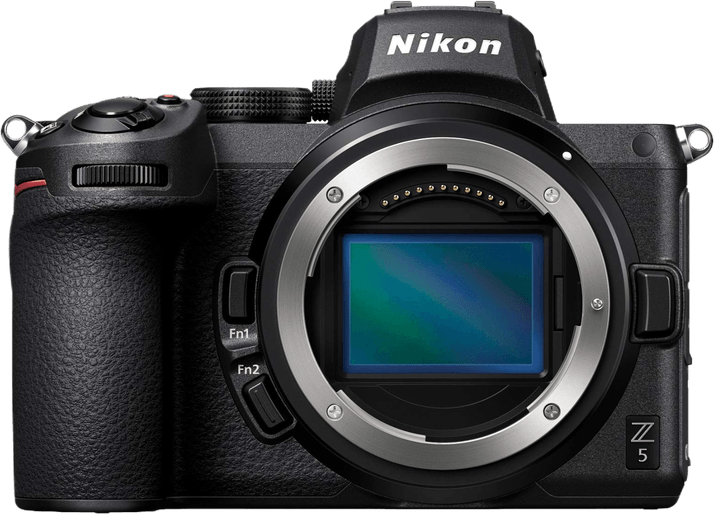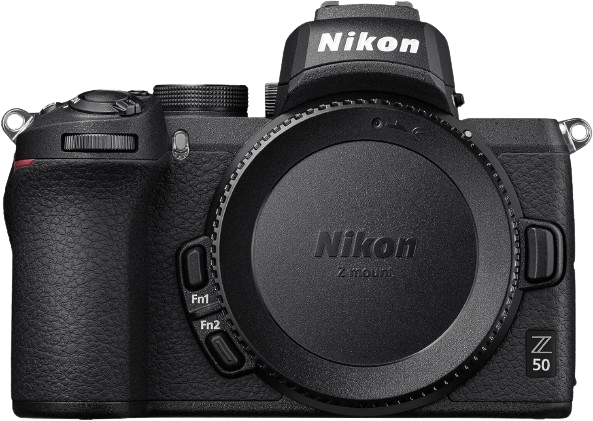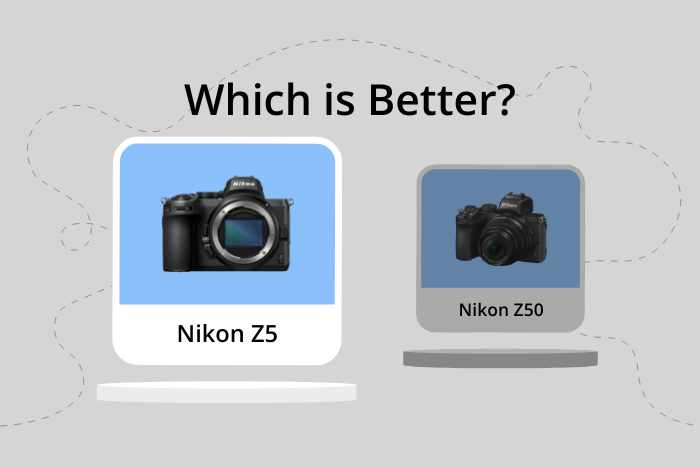Nikon Z5 vs Z50 Comparison
Nikon Z5

Nikon Z50

The Nikon Z5 outperforms the Nikon Z50 with a score of 78/100 compared to 73/100. Both cameras are mirrorless and share similar features, such as their release dates in 2019 and 2020, respectively. However, the Z5 has a higher launch price of $1400, while the Z50 is more affordable at $859.
The Z5’s superior score is due to its larger size, measuring 134 x 100.5 x 69.5mm, and heavier weight at 675g. This makes it more robust and durable for professional use. On the other hand, the Z50 is smaller and lighter, with dimensions of 127 x 94 x 60mm and a weight of 450g. This makes it more suitable for casual photographers who prioritize portability.
In comparing these two cameras, the Nikon Z5 is the better choice for those seeking a more advanced and sturdy camera, while the Nikon Z50 offers a more budget-friendly and portable option.
Nikon Z5 vs Z50 Overview and Optics
The Nikon Z5 outperforms the Nikon Z50 in optics with a score of 81/100 compared to the Z50’s 72/100. Both cameras share several specifications, including a CMOS sensor, an Expeed 6 processor, a DXOMARK sensor score of 97, and a Nikon Z lens mount. Despite these similarities, the Z5 and Z50 differ in a few key areas, which contribute to the Z5’s higher optics score.
The Z5 has a full-frame sensor, while the Z50 has an APS-C sensor. This difference allows the Z5 to capture more light, resulting in better low-light performance and increased dynamic range. Additionally, the Z5 has 24 megapixels compared to the Z50’s 21 megapixels, providing higher resolution images. The Z5 also includes image stabilization, which helps reduce camera shake and produce sharper images, especially in low-light conditions.
On the other hand, the Z50 has a faster shooting speed of 11 frames per second compared to the Z5’s 4.5 frames per second. This advantage makes the Z50 a better choice for capturing fast-moving subjects or action scenes. However, the lack of image stabilization in the Z50 may limit its effectiveness in certain situations.
Taking these factors into account, the Nikon Z5 emerges as the superior choice for optics due to its full-frame sensor, higher megapixel count, and image stabilization. These features contribute to better overall image quality and versatility in various shooting conditions. Conversely, the Nikon Z50’s faster shooting speed may be attractive to some users, but its lack of image stabilization and smaller sensor size make it less competitive in terms of optics.
Nikon Z5 vs Z50 Video Performance
The Nikon Z50 outperforms the Nikon Z5 in video capabilities, boasting a higher video score of 91/100 compared to the Z5’s 83/100. Both cameras share some common features, such as a maximum video resolution of 4K and dimensions of 3840 x 2160. Additionally, they both have built-in time-lapse functionality.
The Nikon Z50 excels due to its higher maximum video frame rate of 120fps, which is twice the frame rate of the Z5’s 60fps. This increased frame rate allows the Z50 to capture smoother and more detailed slow-motion footage, giving it an advantage in video performance.
On the other hand, the Nikon Z5 does not have any specific advantages in video capabilities compared to the Z50. Its lower frame rate of 60fps is still suitable for most videography needs, but it does not offer the same level of slow-motion capabilities as the Z50.
Based on these factors, the Nikon Z50 is the superior choice for individuals prioritizing video performance. Its higher video score and frame rate make it a more versatile option for capturing high-quality video content. While the Nikon Z5 is still a capable camera for video, it falls short in comparison to the Z50’s superior frame rate and overall video performance.
Nikon Z5 vs Z50 Features and Benefits
The Nikon Z50 emerges as the winner in this comparison with a feature score of 86/100, while the Nikon Z5 scores 72/100. Both cameras share several common specifications, making them quite similar in terms of features.
Both the Nikon Z5 and Z50 have a 3.2-inch screen size with a resolution of 1040000 dots. They both also possess a touchscreen and a flip screen, which enhances their usability and convenience. Additionally, neither camera has GPS but both have WIFI and Bluetooth capabilities, allowing for easy connectivity and sharing of photos.
The Nikon Z50 outperforms the Z5 in certain aspects, which contributes to its higher feature score. However, the specific details of these superior features are not provided. It is important to consider these advantages when deciding which camera is better suited to one’s needs.
On the other hand, the Nikon Z5 may have certain features that are better than the Z50, despite its lower overall score. It is essential to examine these areas where the Z5 excels to determine if those specific features are more important for one’s photography requirements.
In comparing the Nikon Z5 and Z50, it is clear that the Z50 has a higher feature score, but both cameras share several similarities. The differences between the two cameras should be carefully considered when making a decision on which camera to purchase. Ultimately, the choice will depend on individual preferences and the specific features that are most important for each photographer.
Nikon Z5 vs Z50 Storage and Battery
The Nikon Z5 outperforms the Nikon Z50 in storage and battery with a score of 73/100, compared to the Z50’s 35/100. Both cameras accept SD, SDHC, and SDXC memory cards and offer USB charging. However, the Z5 holds a significant advantage in several aspects.
The Z5 boasts two memory card slots, double the Z50’s single slot, and is compatible with UHS-II cards, allowing for faster data transfer. Additionally, the Z5’s battery life is superior, providing 470 shots per charge with its EN-EL15c battery, while the Z50’s EN-EL25 battery lasts for only 320 shots.
On the other hand, the Z50 does not offer any advantages in storage and battery over the Z5. The Nikon Z5 clearly outshines the Z50 in this category, offering photographers greater flexibility in memory card management and longer shooting sessions without needing to recharge or swap batteries.
Nikon Z5 vs Z50 Alternatives
Still not ready to make a decision? Check out our other popular camera comparisons for inspiration:

